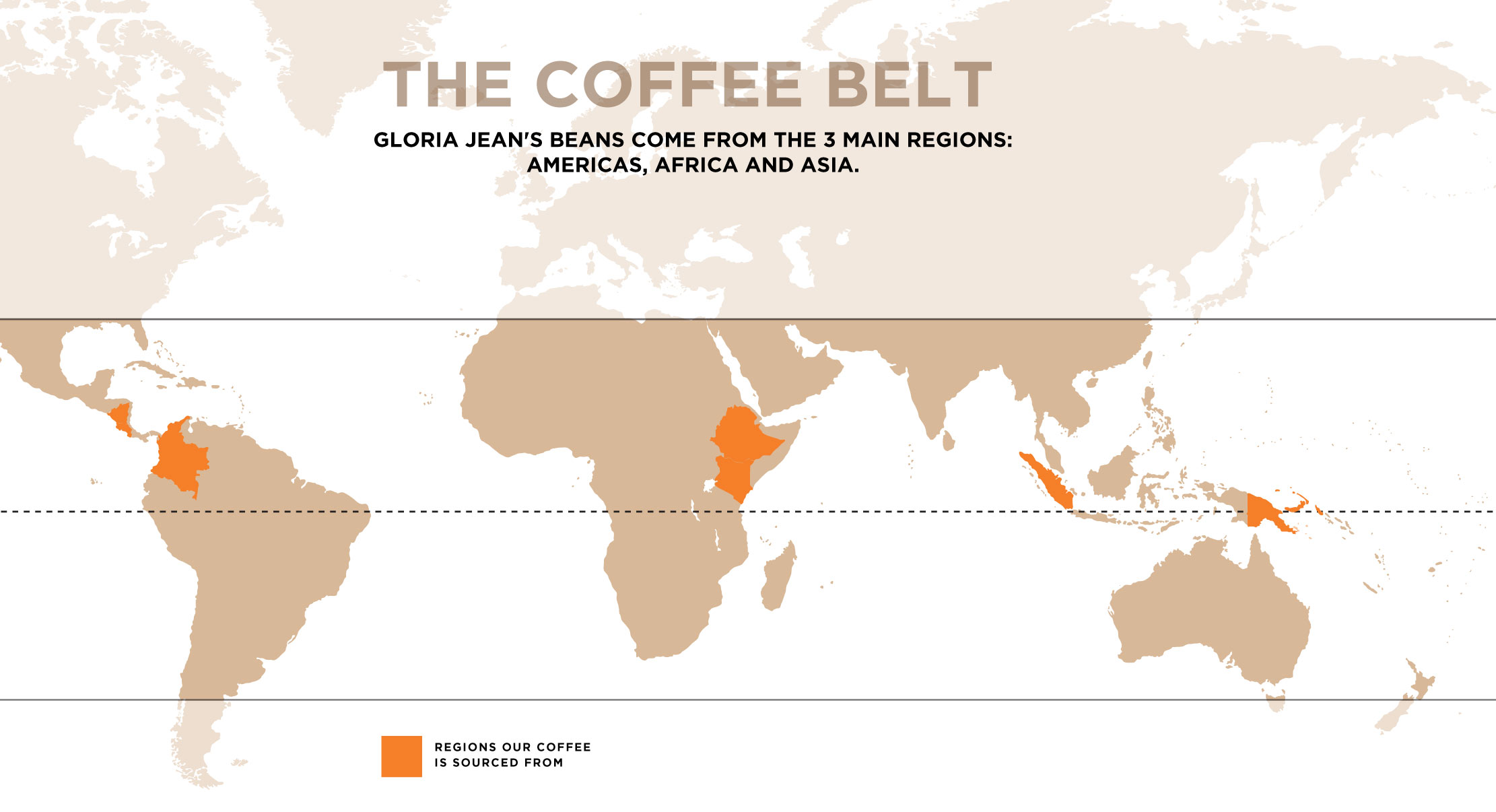

THE AMERICAS
Majority of the world’s coffee is supplied by the Americas, with Brazil accounting for one third of the international coffee market.
Nicaragua
Profile: Delicate hints of nuts/chocolate/citrus/fruit. Medium body with a sweet finish.
Coffee was first brought to Nicaragua by Catholic missionaries in 1790 and did not gain economic significance until 1840 which saw a sharp increase in global demand for coffee. Coffee quickly became the principal export for the nation.
Colombia
Profile: Well balanced and bright in acidity with a medium body. They bring along a mild caramel sweetness sometimes with a nutty undertone.
Coffee is believed to have been introduced in the 1720s by Jesuit priests and its coffee is considered among the best in the world with regards to quality.
Brazil
Profile: Generally low acidity, mildly sweet nutty and chocolate notes. A fuller bodied coffee commonly used for espresso.
The largest producer of coffee in the world, with a production once as high as 80% of the world’s total. It is the most advanced and industrialised coffee producer in the world. Coffee was introduced in 1727 from French Guinea and peaked in the 1920s.
AFRICA
Considered the ‘birthplace’ of coffee, most of today’s coffee varieties are either a natural mutation of or have been genetically modified from one of the species discovered in Africa.
Ethiopia
Profile: they can be vividly bright fruity and tea like in florality with a lighter body, or they can be syrupy, complex and intensely sweet.
Humans first consumed coffee in Ethiopia as a fruit rather than a beverage. Coffee trees grow in forests, in the wild, in homesteads and in plantations. They produce various unusual and astonishing coffees, making Ethiopian coffees so highly desirable.
Burundi
Profile: clean sweetness along with a bright acidity and full body. Notes of Citrus and Blueberry.
Coffee first came here in the 1920s and under the Belgian rule, every peasant famer had to grow at least fifty coffee trees to aid in foreign export.
Kenya
Profile: Generally, take on a complex and clean acidity ranging from Citrus to Blackcurrant and Grapefruit, with a full-bodied fruity sweetness.
Coffee did not make its way to Kenya until the late 18th century, despite neighbouring Ethiopia. The plants were brought over by French missionaries from the Island of Bourbon. Kenya is known for its excellent research and development and this is apparent in the extremely high-quality coffees produced here.
ASIA
It is believed that coffee was smuggled to Asia (India) in 1670.
Indonesia
Profile: Fuller bodied than other coffees. They have a low acidity compared to most other origins and are characterised by their herbaceous earthy undertones.
Coffee was first introduced when a Dutch governor sent a present of a few seedlings from India and now Indonesia is one of the biggest coffee producers in Asia. There are many growing regions within Indonesia offering distinct flavour profiles and characteristics.
